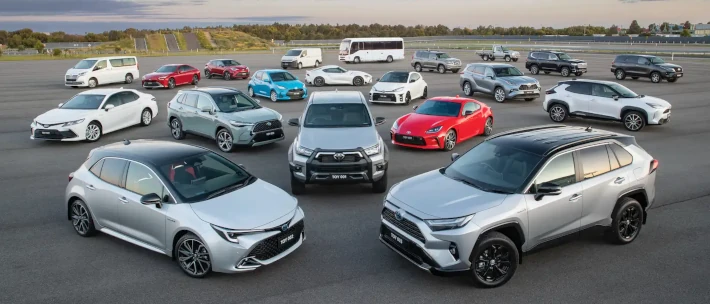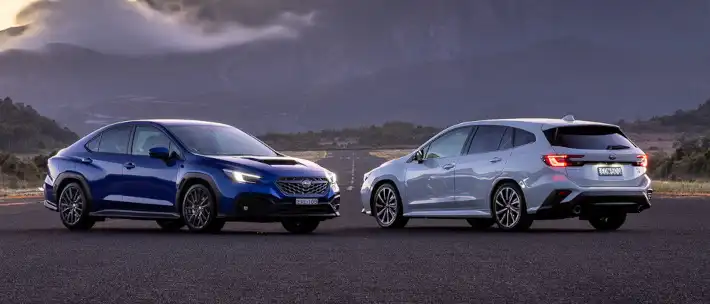Thankfully for buyers in 2024, there’s a heap of choice across multiple segments for fuel-efficient vehicles designed to keep you moving and keep your fuel bills low.
Running costs like fuel can contribute to thousands of extra dollars over the lifespan of your ownership, meaning an economical car is a must-have for those looking to minimise the hit to their back pocket.
For the best possible look at the market, we’re going to cover the ten most economical cars with your typical internal combustion engine, as well as ten of the most fuel-efficient hybrids and PHEVs currently on sale in 2024.
Get in touch with one of our Car Buying Specialists today.
Request a quote10 Most Economical Non-Hybrid Cars in Australia 2024
For those on a tight budget simply looking for the best fuel economy figures without a pricey hybrid powertrain, below you can find some of your best options for an affordable, fuel-efficient package.
-
Suzuki Swift - 4.6L per 100km
-
Suzuki Ignis - 4.7L per 100km
-
Audi Q5 35 TDI - 4.8L per 100km
-
Fiat 500 - 4.8L per 100km
-
Toyota Yaris - 4.9L per 100km
-
Skoda Fabia - 4.9L per 100km
-
Mazda 2 - 5.0L per 100km
-
Kia Picanto - 5.4L per 100km
-
Toyota Yaris Cross - 5.4L per 100km
-
Volkswagen Polo - 5.4L per 100km
Need a hand finding your next car? One of our car-buying experts can take the stress out of the buying process and help find you the best possible price.
10 Most Economical Hybrid Cars in Australia 2024
Now that we’ve covered the most fuel-efficient, non-hybrid assisted vehicles on sale, let’s cast our attention to vehicles that have an electric motor to help take the stress off the internal combustion unit.
Below you can find a list of the ten most economical hybrid cars currently on sale here in Australia, a list completely dominated by Toyota, one of the earliest adopters of mass-manufactured hybrid powertrains.
-
Toyota Yaris Hybrid - 3.3L/100km
-
Toyota Yaris Cross Hybrid - 3.8L/100km
-
Hyundai Kona Hybrid - 3.9L/100km
-
Hyundai i30 Sedan Hybrid - 3.9L/100km
-
Toyota Corolla Hybrid - 3.9L/100km
-
Kia Niro - 4.0L/100km
-
Honda Civic E:HEV - 4.2L/100km
-
Toyota Camry - 4.2L/100km
-
Honda Accord VTi-LX Hybrid - 4.3L/100km
-
Honda HR-V E:HEV L - 4.3L/100km
10 Most Economical Plug-in Hybrid (PHEV) Cars in Australia 2024
Finally, let’s take a look at the ten most fuel-efficient plug-in hybrid electric vehicle (PHEV) packages on sale.
Keep in mind that these figures are incredibly low due to the challenges of accurately measuring fuel economy figures of a PHEV powertrain, which all require a fully-charged battery pack to attain.
-
Kia Niro PHEV - 1.3L/100km
-
Lexus NX 450h - 1.3L/100km
-
Mitsubishi Outlander PHEV - 1.5L/100km
-
Mercedes-Benz A250e - 1.6L/100km
-
Peugeot 3008 GT PHEV - 1.6L/100km
-
Volvo XC60 T8 Recharge - 1.6L/100km
-
MG HS + EV - 1.7L/100km
-
Peugeot 508 GT PHEV - 1.8L/100km
-
Cupra Leon VZe - 1.8L/100km
-
Volvo XC90 T8 Recharge - 1.8L/100km
FAQ: How is Fuel Economy Measured?
Fuel economy figures for any given car are tested under controlled conditions specified by Australian Design Rules (ADR) 81/02 for the Fuel Consumption Labelling for Light Vehicles.
In these tests, the fuel consumption of a vehicle is tested in two different driving scenarios, both the ‘urban’ cycle, which relates to stop-start traffic around town, as well as ‘extra-urban’ cycles that replicate highway driving.
The urban (town driving) and extra-urban (highway driving) cycles are averaged out into what’s known as a ‘combined cycle’ fuel economy figure.
This is measured in litres per 100-kilometres and abbreviated into L/100km, which is a standard designed to give a represenative figure of how much fuel that vehicle’s engine will consume on a mix of town and highway driving.
Request a Quote
If you’re looking to upgrade to a new car, be sure to reach out to one of our car-buying experts who can help find you the best possible price.
Get in touch with one of our Car Buying Specialists today.
Request a quote








